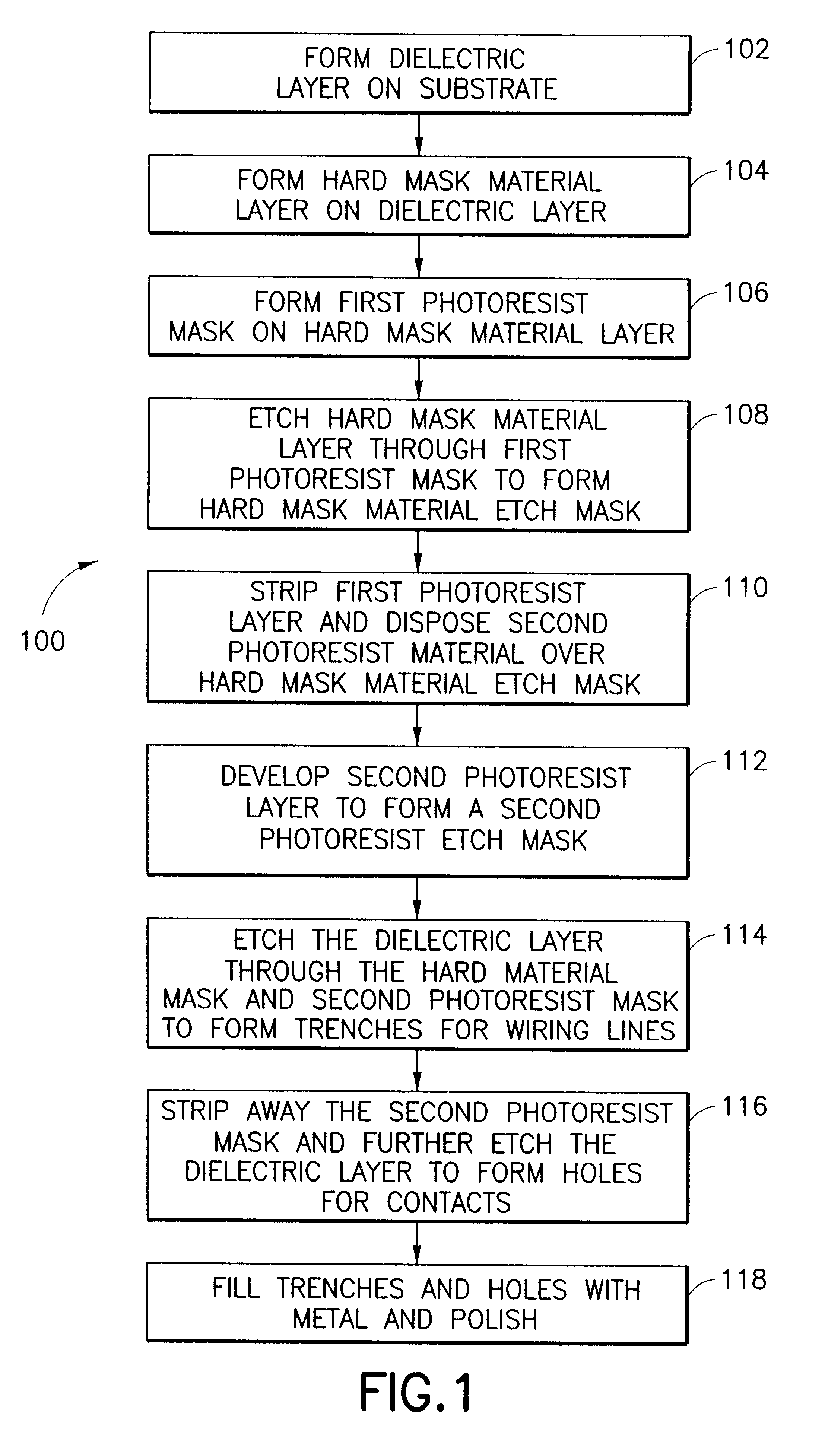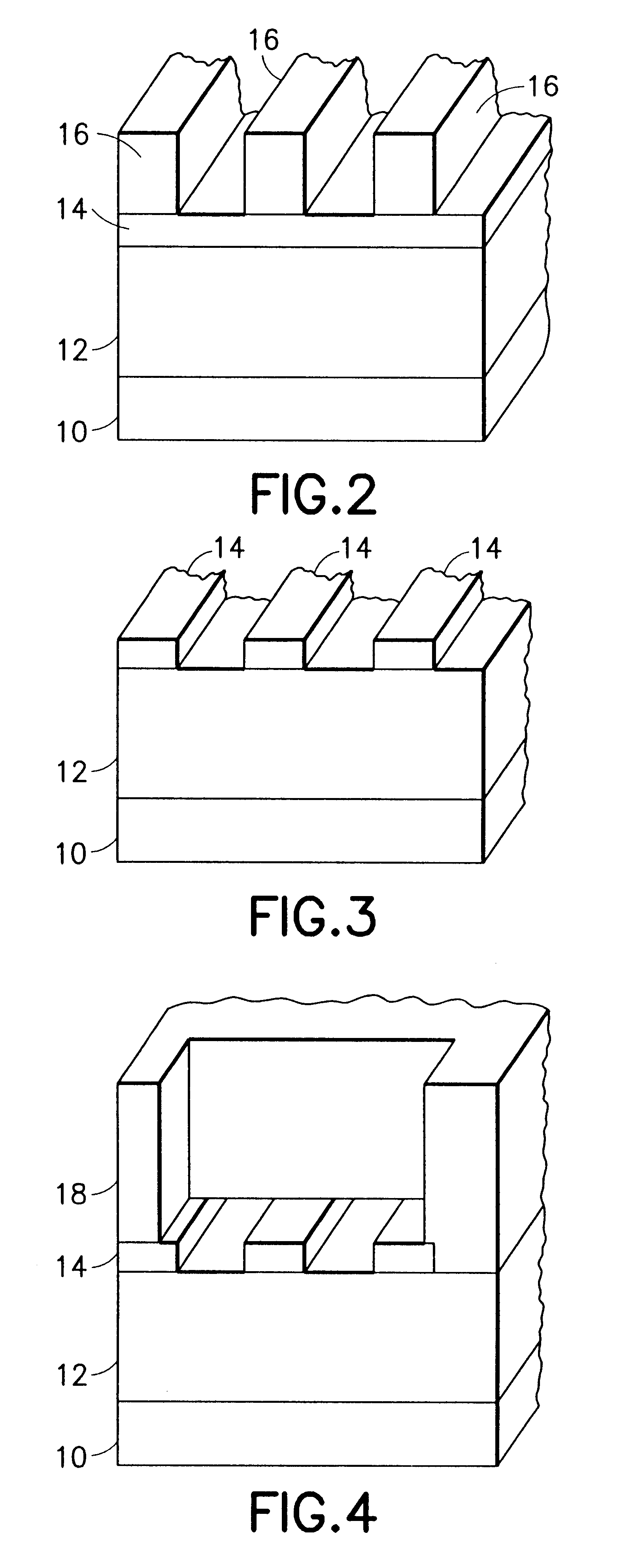Process for self-alignment of sub-critical contacts to wiring
a technology of sub-critical contacts and wiring, which is applied in the direction of instruments, photomechanical devices, optics, etc., can solve the problems of difficult lithographic scaling of contact holes in integrated circuits, and the enhancement of isolated bright images by techniques such as contact holes is not easy to achiev
- Summary
- Abstract
- Description
- Claims
- Application Information
AI Technical Summary
Problems solved by technology
Method used
Image
Examples
Embodiment Construction
The present invention provides a method that forms contacts on an integrated circuit that are self-aligned with the wiring patterns of the integrated circuit. In the method the metal wiring is patterned first over an insulating substrate layer. The insulator layer is composed of two layers, one being a thicker layer underneath a thinner layer at the substrate surface. The wiring pattern trenches are etched through the thinner surface layer, and if desired, partially through the lower, thicker layer.
After the wiring pattern is etched, the contacts for the wiring layer are printed as line / space patterns which intersect the wiring pattern. The contact pattern is etched into the lower, thicker layer with an etch process that is selective to the thinner layer. As a result, the only location where a contact is formed is at the intersection of the wiring pattern with the photoresist space of the contact layer. The width of the contact is determined by the width of the wiring image and the ...
PUM
 Login to View More
Login to View More Abstract
Description
Claims
Application Information
 Login to View More
Login to View More - R&D
- Intellectual Property
- Life Sciences
- Materials
- Tech Scout
- Unparalleled Data Quality
- Higher Quality Content
- 60% Fewer Hallucinations
Browse by: Latest US Patents, China's latest patents, Technical Efficacy Thesaurus, Application Domain, Technology Topic, Popular Technical Reports.
© 2025 PatSnap. All rights reserved.Legal|Privacy policy|Modern Slavery Act Transparency Statement|Sitemap|About US| Contact US: help@patsnap.com



